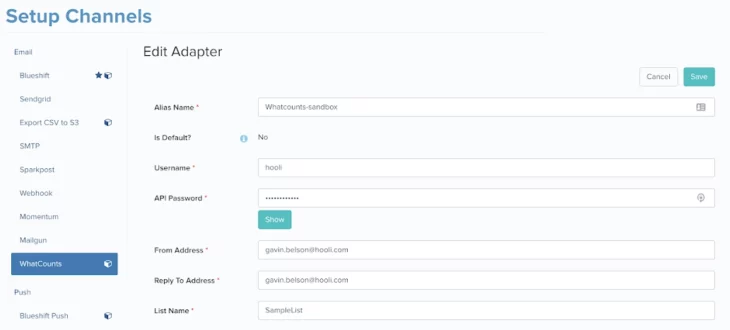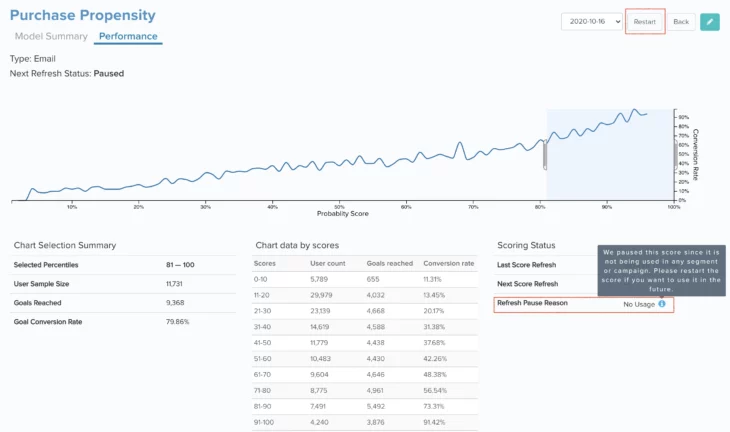11.10.20
November Updates
11.10.20
WhatCounts Email Adapter
Blueshift added native support for email provider, WhatCounts. With this integration, Blueshift’s customers now have access to five native email solutions including Sendgrid, Sparkpost, Mailgun, Momentum, and now, WhatCounts. With native email adapters, marketers can send dynamic, high-volumes of emails to their customers directly from Blueshift’s campaign journey builder and automatically track core performance metrics such as sends, impressions, clicks, bounces, and more.
Set up is seamless — within the Channels page within the Blueshift interface, marketers can select WhatCounts, add their account credentials, and boom… adapter created. Brands can start sending emails immediately from Blueshift through WhatCounts.
11.10.20
Custom CNAME for for SMTP Adapters
Blueshift now supports custom CNAME within SMTP adapters, enabling marketers to label emails and redirection links with the same ‘from name’ to drive better deliverability and brand consistency. This enhancement empowers brands, who are currently not using Blueshift’s native integrations, to customize CNAMEs just like those of our native email adapters.
11.10.20
SFTP for Data Exports
Marketers can now export data via SFTP. Clients no longer need to use an Amazon S3 bucket or introduce new processes to download audience data. SFTP is currently available for segment exports but will soon be expanded to any other data from Blueshift.
To download an audience through SFTP, simply set up an SFTP adapter by clicking on the settings button on the segment index screen. Then, at the time of setting up an export, select the SFTP adapter built in the previous step.
11.10.20
Custom Role Enhancements
Through our Role-Based Access Management Tool, marketers can now set and define access to our ‘Audit Trail’ and ‘Customer Preference Forms’ to non-admin users. Each platform entity has different access privileges, so marketers have complete control to customize which users have access to certain pages of the Blueshift platform as needed. Brands in strict, data-compliant industries can now feel more confident and secure knowing which users have access to key sections of the Blueshift platform.
Granting or revoking access is quick and easy. Account Admins have the ability to set access for both Audit Trails and Preference Center on top of the other entities, directly in the Blueshift UI. Simply navigate to the ‘Account Settings page, select User Management, then click Manage Roles. Marketers can either create a new role or edit an existing one to have this capability.
11.10.20
Pause Unused Predictive Scores
Blueshift will now pause predictive scores (channel engagement or intent score) that haven’t been used in a segment, campaign, or syndication for over a 30-day period. Scores that have not been used will automatically default to paused. Whenever marketers would like to start using the score again, just click ‘restart’ from the index or detail screen and begin using it in campaigns immediately.
11.10.20
Updated Mobile SDK
Blueshift has released new versions of our mobile SDKs for both Android (V3.1.7) and iOS (V2.1.9). This release greatly improves security with ‘HttpsURLConnection’ abstraction and enhances In-App template creation by using ‘ImageView’ to directly display high-resolution images. To learn more about our updated mobile SDK, please refer to our release notes: Android and iOS.




